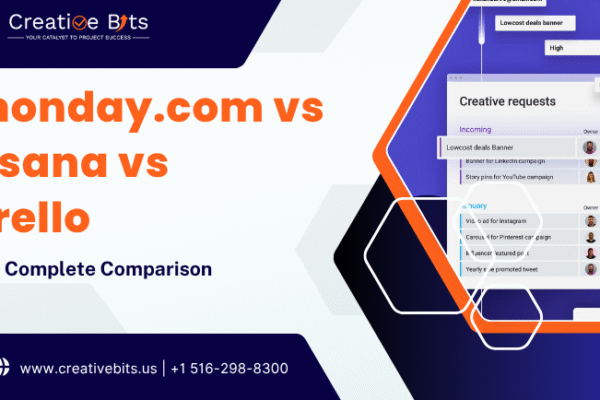In the ever-evolving business landscape, companies are continually seeking ways to optimize operations, reduce costs, and enhance project delivery. Project Management as a Service (PMaaS) has emerged as a powerful solution, offering businesses the flexibility to outsource their project management needs to experts. But how do you successfully implement Project Management as a Service PMaaS in your organization? This comprehensive guide will walk you through the steps to ensure a smooth and effective integration.
Understanding Project Management as a Service (PMaaS)
Before diving into the implementation process, it’s essential to understand what PMaaS entails. PMaaS allows organizations to outsource their project management functions to specialized service providers. This model provides access to experienced project managers, advanced tools, and proven methodologies without the overhead of maintaining a full-time project management team. The service is scalable, cost-effective, and tailored to meet the specific needs of your organization.
Read on: How PMaaS Helps PMOs Achieve Better Project Outcomes
Step 1: Assess Your Project Management Needs
Identify Current Gaps and Challenges
The first step in implementing PMaaS is to assess your current project management capabilities. Identify areas where your in-house team may lack expertise or where existing processes are inefficient. Common challenges that lead organizations to consider PMaaS include:
- Limited internal expertise: Lack of specialized skills in managing complex projects.
- Resource constraints: Inability to scale project management resources up or down as needed.
- Inefficient processes: Delays and inefficiencies in project execution and delivery.
- High overhead costs: The expense of maintaining a full-time project management team.
Define Your Objectives
Once you’ve identified the gaps in your current project management approach, clearly define what you aim to achieve by implementing PMaaS. Your objectives may include:
- Enhancing project delivery speed: Accelerating timelines to meet market demands.
- Reducing costs: Lowering the overhead associated with in-house project management.
- Accessing specialized skills: Leveraging external expertise for specific types of projects.
- Improving risk management: Implementing robust risk mitigation strategies.
By establishing clear objectives, you can better align your PMaaS implementation strategy with your organization’s overall goals.
Step 2: Select the Right PMaaS Provider
Research Potential Providers
Choosing the right PMaaS provider is critical to the success of your implementation. Start by researching providers with a strong track record in your industry. Look for the following qualities:
- Experience and expertise: Providers with a history of managing projects similar to yours.
- Client testimonials and case studies: Evidence of successful outcomes in previous engagements.
- Range of services: The ability to offer comprehensive project management solutions, from planning to execution and reporting.
Request and Evaluate Proposals
Once you’ve shortlisted potential providers, request detailed proposals that outline their approach, pricing, and services. Evaluate these proposals based on how well they align with your project management needs and objectives. Consider factors such as:
- Cost structure: Is the pricing model flexible and within your budget?
- Service level agreements (SLAs): Are the performance metrics and expectations clearly defined?
- Customization: Can the provider tailor their services to fit your specific requirements?
Assess Cultural Fit and Compatibility
Beyond technical expertise, it’s essential to consider the cultural fit and communication style of the PMaaS provider. Successful collaboration depends on a strong partnership, so ensure that the provider’s values, work ethic, and communication practices align with your organization’s culture.
Step 3: Define the Scope of Services
Customize the Service Offering
Work closely with your chosen PMaaS provider to define the specific services they will deliver. This might include:
- End-to-end project management: Handling all phases of the project, from initiation to closure.
- Project planning and resource management: Developing detailed project plans and allocating resources efficiently.
- Risk management and mitigation: Identifying potential risks and implementing strategies to mitigate them.
- Reporting and analytics: Providing regular updates on project progress, budget adherence, and performance metrics.
By customizing the scope of services, you ensure that the PMaaS provider meets your specific needs and objectives.
Establish Clear Service Level Agreements (SLAs)
Service Level Agreements (SLAs) are crucial in defining the expectations and responsibilities of both parties. Work with your PMaaS provider to establish SLAs that cover:
- Performance metrics: Key Performance Indicators (KPIs) that measure the success of the project management services.
- Timelines: Expected timelines for project milestones and deliverables.
- Communication protocols: How and when the provider will report progress and address issues.
- Issue resolution: Procedures for addressing and resolving any problems that arise during the project.
Clear SLAs help ensure accountability and provide a framework for measuring the success of the PMaaS implementation.
Step 4: Integrate PMaaS into Your Operations
Onboarding and Training
A successful PMaaS implementation requires a seamless integration into your organization’s operations. Begin by onboarding the PMaaS provider, and introducing them to your internal processes, tools, and team members. Provide necessary training on any proprietary systems or workflows they’ll be working with.
Develop a Communication Plan
Effective communication is key to the success of any project management initiative. Develop a communication plan that outlines:
- Regular updates: Schedule status meetings, progress reports, and performance reviews to keep all stakeholders informed.
- Points of contact: Designate primary contacts within your organization and the PMaaS provider to facilitate communication.
- Escalation procedures: Establish clear protocols for escalating issues or concerns that may arise during the project.
By maintaining open lines of communication, you can ensure that the PMaaS provider remains aligned with your organization’s goals and objectives.
Step 5: Leverage Technology and Tools
Project Management Software Integration
To maximize the benefits of PMaaS, ensure that the provider uses project management software compatible with your existing tools. This might include platforms like:
- monday.com: For comprehensive project planning, tracking, and collaboration.
- Jira: For managing complex IT projects and software development.
- Microsoft Project: For detailed project scheduling and resource management.
Integrating these tools with your existing systems allows for seamless collaboration and real-time visibility into project progress.
Implement Collaboration Tools
In addition to project management software, consider using collaboration tools to facilitate communication between your internal team and the PMaaS provider. These tools help bridge the gap between in-house staff and the PMaaS provider, ensuring that everyone remains on the same page throughout the project.
Step 6: Monitor and Evaluate Performance
Establish Key Performance Indicators (KPIs)
To assess the success of your PMaaS implementation, establish Key Performance Indicators (KPIs) that align with your project management objectives. These KPIs might include:
- Project completion rates: The percentage of projects completed on time and within budget.
- Budget adherence: The extent to which projects stay within their allocated budgets.
- Client satisfaction: Feedback from stakeholders and clients regarding project outcomes.
By regularly tracking these KPIs, you can evaluate the effectiveness of the PMaaS provider and make informed decisions about future engagements.
Conduct Regular Performance Reviews
Schedule regular performance reviews with your PMaaS provider to discuss progress, address any issues, and identify areas for improvement. Use these reviews to:
- Assess project outcomes: Evaluate the success of completed projects against the established KPIs.
- Adjust the scope of services: Make adjustments to the services provided based on the results of the reviews.
- Enhance collaboration: Strengthen the partnership between your organization and the PMaaS provider through continuous feedback and communication.
Regular performance reviews help ensure that the PMaaS provider continues to meet your organization’s needs and contributes to achieving your strategic goals.
Step 7: Scale and Optimize Your PMaaS Implementation
Adjust Resources as Needed
One of the key advantages of PMaaS is its scalability. As your project demands fluctuate, work with your PMaaS provider to scale resources up or down. This flexibility ensures that you always have the right level of support without overcommitting or under-resourcing your projects.
Encourage Continuous Improvement
To maximize the long-term benefits of PMaaS, foster a culture of continuous improvement. Encourage feedback from your internal teams and the PMaaS provider, and use this feedback to refine processes, enhance collaboration, and improve overall project outcomes. This ongoing optimization helps your organization stay agile and responsive to changing business needs.
Step 8: Ensure Compliance and Security
Data Security and Privacy
Data security is a critical consideration when outsourcing project management functions. Ensure that your PMaaS provider adheres to your organization’s data security and privacy standards. This includes:
- Data encryption: Ensuring that all project data is encrypted during transmission and storage.
- Access controls: Implementing strict access controls to limit who can view and edit project data.
- Compliance with regulations: Verifying that the provider complies with relevant industry regulations, such as GDPR or HIPAA, depending on your sector.
By prioritizing data security, you can protect your organization’s sensitive information and maintain compliance with regulatory requirements.
Regulatory Compliance
If your organization operates in a highly regulated industry, it’s essential to ensure that the PMaaS provider complies with all relevant regulations and standards. This might include:
- Documentation: Maintaining detailed records of project activities and decisions.
- Audit trails: Implementing audit trails to track changes and actions taken during the project.
- Reporting: Providing regular reports to demonstrate compliance with industry regulations.
Ensuring regulatory compliance helps mitigate risks and protects your organization from potential legal issues.
Conclusion
Implementing Project Management as a Service (PMaaS) in your organization offers a strategic advantage by providing access to expert project management resources, reducing costs, and improving project delivery outcomes. By following the steps outlined in this guide—assessing your needs, selecting the right provider, defining the scope of services, integrating PMaaS into your operations, leveraging technology, monitoring performance, and ensuring compliance—you can successfully implement PMaaS and position your organization for success in an increasingly competitive marketplace.
Ready to transform your project management approach and drive efficiency? Get in touch with us today to discover how our Project Management as a Service (PMaaS) can streamline your operations, reduce costs, and deliver successful outcomes. Let’s start your journey to more effective project management—contact us now to get started!

 monday.com Services
monday.com Services
